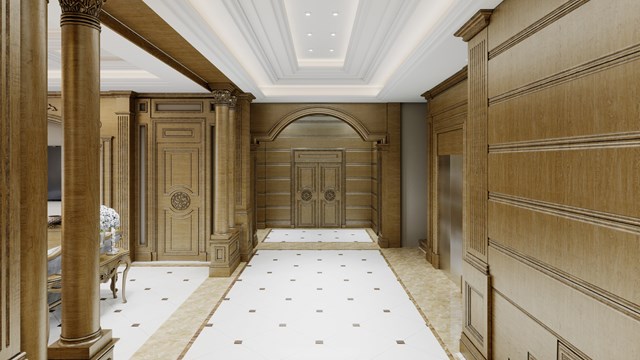Being a member of a community means different things to different people. As such, when it comes to offering social programs and amenities, respective wants, needs and preferences can run the gamut. For board members and managers, having programs in place that cater to the collective—toddlers to octogenarians and those in between and beyond—can be a challenge.
“Social programming in a multi-family community can come about in a variety of ways,” says Cynthia Graffeo, director of client relations for the New York-based Argo Real Estate. “We have seen everything from residents volunteering to start a social initiative to board members suggesting to management that a committee be formed.”
Since a co-op or a condo property can be populated by a wide range of residents, board members, formed committees and managers often have to work in a collaborative fashion to ensure all residential requests are considered. For example, a young married couple raising children will likely have different wants, such as playrooms and daycare, than a retired couple who may prefer game nights and social outings to the museum.
“You have to be open and flexible with the people you are working with,” says Kaitlin Nelson, LMSW, the program director for the New York-based Goddard Riverside West Side. “While you may be educated in your position, these people (residents) are experts in their situation—in their life and they know what they want and need. You have to give residents some ownership in the process.”
Each Property is Unique
Robin B. Steiner, president of the White Plains, New York-based RMR Residential Realty, explains that his firm manages approximately 30 properties in the region. Every one, he notes, has different needs, especially those catering to an older demographic.
For example, Steiner manages a condo in Larchmont that has 134 units. While a majority of residents range in age, he says the 30 percent are 65 or older. “They have a wide range of physical abilities. We set up a card room and residents organize their own bridge games on a regular basis,” he says. “We renovated the gym and provided seminars and personal trainers.”
For those older residents with mobility issues, Steiner arranged for a yoga instructor to teach “chair yoga,” which was successful. “We also have a pool but lots of these folks go away for the winter so the programs do tend to stop during that time,” says Steiner.
Graffeo explains that Argo-managed buildings also cater to various age groups. For older adults, programs can run the spectrum from resident walking clubs to gardening clubs, knitting clubs to book clubs and Tai Chi. “Walking, Tai Chi, and yoga/aqua yoga are great because it is low impact and can help develop balance, range of motion and strength,” she says.
For teens, single adults, and families, she says classes in Zumba, Pilates, kickboxing, spinning, sculpting/super-sculpting, high intensity interval training, yoga and yoga barre are popular. “For little kids, buildings that have playrooms are popular. Playrooms can have soft flooring, age appropriate toys and games, and even little tricycles for young children,” Graffeo continues. “Many fitness centers also have kid yoga classes.”
Nelson explains that Goddard Riverside West Side is comprised of three buildings with approximately 1,000 moderate income residents 60 years or older. Often the programs and services residents are interested in are shaped by their life experiences.
“Some of our residents are great grandparents with three generations of their family living in the building as well as surrounding neighborhood and you have some people who never married and never had children,” says Nelson. “Finding out works best is a trial and error process.”
Communication is King
The once go-to gathering place to share news and information, the bulletin board, has morphed in recent years to a more virtual experience. While certain older residents still prefer cork board and push pinned flyers, it is viewed as a dying form of communication. Steiner explains that for the majority of the properties he manages, BuildingLink is the preferred method of communication. The company, which serves 984,510 residents, 46,623 property managers and staff in 2,615 buildings worldwide, serves as a paperless portal for news, information and sometimes sounding off.
“Four years ago when I started, the bulletin board was chock full of notices. Today, there are maybe four or five notices up there. People can post information on BuildingLink. We haven’t really used Facebook nor has there been a request for it,” says Steiner. “BuildingLink allows residents to voice concerns and learn about news and activities.”
Since boards and managing agents do not have crystal balls, sometimes running as program can be hit or miss. And in some cases, the activity could be otherwise popular, but the way it’s packaged is off-putting.
“We had the opportunity to have a drum circle. We advertised it as a ‘Drum Circle’ and only a couple of people came out,” says Nelson. “Afterwards, the reaction from the residents was: ‘What in the world is a drum circle? It sounds intimidating.’ So the next time we called it a ‘Rhythm Party’ and we had a great turn out.”
Learning from this experience and others, Nelson now tailors her advertising so that residents have an understanding of what the event entails and what they might learn. “When I do flyers for an event, the front typically has the name, the time, the place and who is presenting,” she continues. “On the back of the flyer, there are three or four bullet points that position questions about the presentation to help pique the interest of the residents.”
In many cases, boards and managers will also execute both formal and informal polling to try and get a better understanding of what programs will be successful. As Nelson notes, the content and delivery have to be aligned. Graffeo agrees with Nelson adding that many properties will form social committees that interface with the managing agent and board.
“Property managers, and/or social committees, can poll residents via e-mail and/or by posting to the building’s bulletin boards, the building’s website and/or BuildingLink.com or other online services that the building may subscribe to,” says Graffeo.
While social media tools have proven successful in communication—from alerting residents of bad weather to reminding residents about a holiday party, Nelson says that sometimes the best way to understand residents needs is to strike up a conversation and listen.
“One-on-one conversations are so important. A lot of residents come into the office for a friendly visit to sit down and chat,” say Nelson. “I use this as an opportunity to talk about programming they might be interested in. May be they are interested in museums. If they are, I can see if other residents are interested too and maybe we can schedule a trip.”
The Bottom Line
In Steiner’s experience, the majority of properties managed have a budget line for social activities. Depending on the property this can range from an annual holiday party to numerous parties and social outings to museums and the like.
“In some buildings where there are basically no amenities, the board will allocate a certain amount of money for a holiday party, the annual meeting and maybe one town hall-type meeting during the year and maybe a summer barbeque. Not big dollars,” says Steiner. “In other communities, activities will pop during the year and the board will manage these activities from the reserves for activities. These are not events they planned but they have a budget in place they can draw from.”
Graffeo adds that each community will take a different approach to how they budget for activities. In some cases, it may be a combination of allocated money from the board along with fellow residents banding together to create shared experiences.
“For communities with modest budgets, we’ve seen gatherings hosted in residents’ apartments, in community rooms or on roof decks for holiday parties, wine tastings, book clubs, and game nights for bridge and board games,” she says.
Creating Meaningful Experiences
While most communities can expect a holiday party and perhaps a summer barbecue each year, as units change hands and/or residents get older, needs and wants also change. As a result, if a yoga program worked two years ago, it may not work two years later. So as boards, managers and social committee determine residential needs, they have to continually adapt to changing circumstances. In many cases, this requires creative thinking.
“Over the course of my career as a property manager, one of the buildings I worked with decided that instead of hiring a landscaper to tend to the tree pits in front of their building, they would ask interested residents to volunteer and would reimburse any costs associated with this. A notice was e-mailed and posted on the lobby table,” says Graffeo. “A few residents and children volunteered to plant flowers in the tree pits seasonally and maintain them by pulling weeds, turning the soil and such. Not only were the tree pits maintained beautifully, but it served to uplift the building’s community spirit and increase curb appeal.”
As Graffeo points out, with communication and shared willingness to affect change, residents can and do come together to make their community different. While these are positive experiences, new board members and younger managing agents also have to keep a mindful eye on any liabilities that can result from an activity—whether a physical activity like landscaping or a social gathering such as a party.
“The first question you have to ask in a social event is if you are going to allow alcohol to be served as there are all kinds of liabilities,” says Steiner. “But with any event, it’s important that you can ensure that there is enough time to prepare for the party—obviously you don’t want to announce a party for Saturday on the Wednesday before. Also with any event, you really need to have a committee behind it so the event is not a drain on the manager’s time because it is not our expertise and we are often busy with board meetings and day-to-day operations. ”
W.B. King is a freelance writer and a frequent contributor to The Cooperator.







Leave a Comment